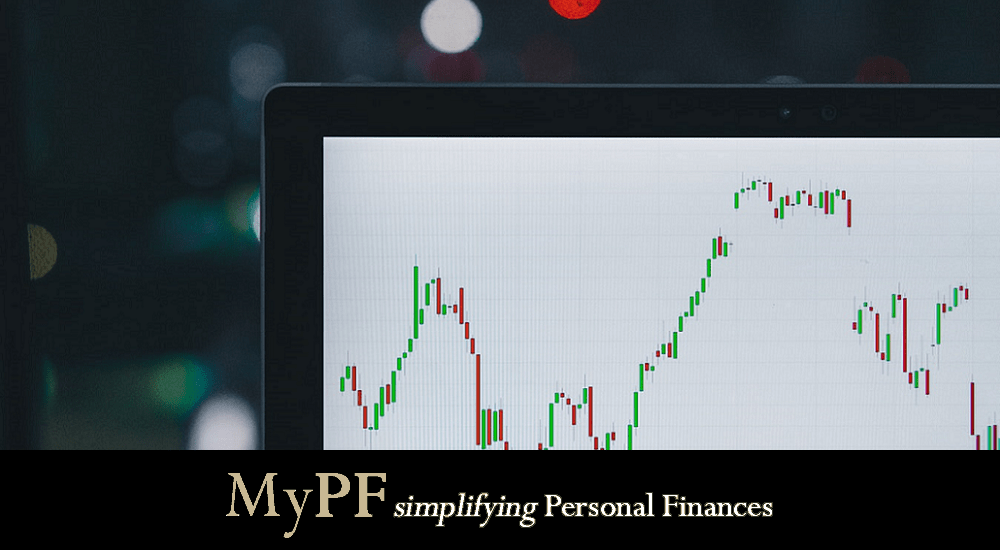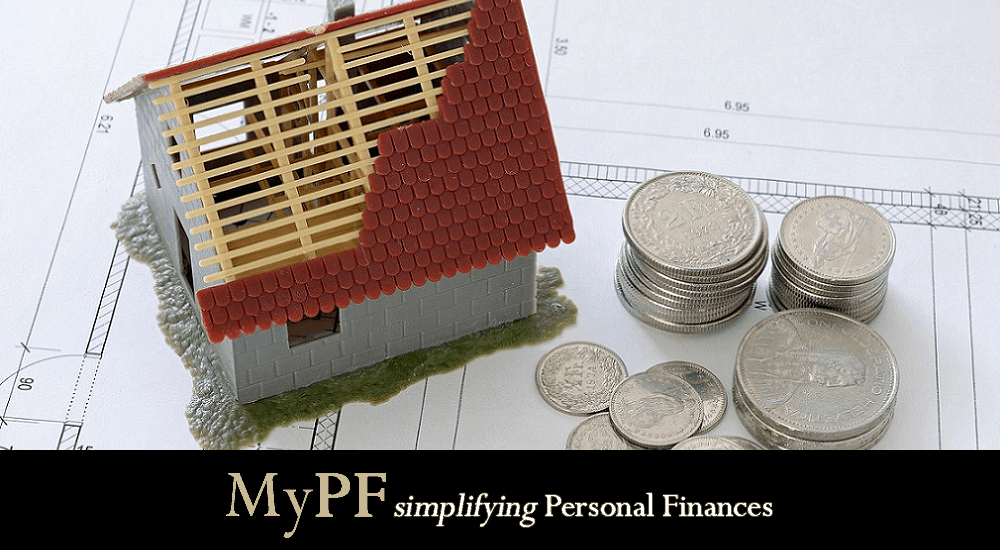Inflation is a natural phenomenon in the market economy which means that we should constantly be preparing for the advent of such an event.
We have grown to expect the coming and going of inflation based on the fluctuation of our modern economy. In ten years, inflation expectations deem that a dollar will not buy the same number of products. Simply put, the level of prices of goods and services gradually increase over time and inflation is measured as that rate of change.
As a result of inflation, a given quantity of money will be worth less than it was previously. Therefore, finding the correct inflation-hedging methods and investments is critical.
The rate of inflation in a given economy fluctuates based on current circumstances. Inflation is caused by factors like rising salaries and rapid increases in raw resources such as oil.
There are numerous ways to protect against inflation; for example, a diligent investor might plan for inflation by investing in asset classes that outperform the market during periods of high inflation.
When inflation strikes, keeping inflation-hedged asset classes on your watch list—and then striking when you see inflation begin to take shape in a true, organic growing economy—can help your portfolio thrive.
Contents
What Should You Do During a Period of High Inflation?
Auditing and cancelling subscription services, as well as examining online price comparison sites before filling up on gas, are two simple cost-cutting steps to assist in combating rising prices.
Many people put debt repayment at the bottom of their financial priority list, paying it off with whatever money is left over at the end of the month. Debt repayment, particularly variable debt such as credit cards, lines of credit, personal loans, and variable rate mortgages, should now take second place to expenditures for wanted goods and be far ahead of investment.
While there are many ways to invest, you won’t be able to beat a credit card interest rate of 16% or 18% with any investment.
It’s tempting to look for assets that will keep up with inflation as prices rise. Experts advocate setting aside enough cash to solve any immediate financial issues before deciding where to invest. If you have debt, pay it off first, but save for an emergency fund second.
#1. Consider Gold and Other Commodities
Advocates of gold will attest to its intrinsic value. It’s gleaming and metallic, and it melts into bars, coins, and jewellery with ease. It doesn’t corrode, rust, or deteriorate. Over the long run, gold has performed roughly in line with the S&P 500.
However, gold has shown potential to not only beat broad-based indexes but also sub-indices and most particularly commodities. Over the last five years, all sub-indices have declined, including precious metals.
During that time, however, gold has climbed. During periods of economic expansion, when equity markets tend to rise, gold, like other commodities, is positively connected with equities.
During risk-off periods, however, gold is negatively linked with other assets, protecting investors from tail risks and other occurrences that can have a substantial negative impact on capital or wealth – something that other commodities cannot always provide.
While gold is a good inflation bet, it is far from the only one. Because commodities have pricing power, they profit from inflation in general.
When investing in commodity-based enterprises, the low-cost producer (s) is the most important factor to consider. TIPS, which are inflation-protected securities, are a good option for more conservative investors. One thing you don’t want is to be sitting idle, with cash, believing you’re doing OK while the value of your dollar is deteriorating.
#2. Establish a 60/40 Stock or Bond Portfolio
Create a 60-40 stock/bond portfolio. Investors seeking balance should possess less of the “40,” a little less of the “60,” and a lot more of the “other” if they use 60/40 as their benchmark. But that’s the extent of the generalisations. There is no such thing as a one-size-fits-all alternative allocation that makes sense for all investors.
The sweet spot is somewhere between “just enough to make a difference” and “too much to keep investors interested.” The only incorrect response is zero, as has become increasingly evident. Stocks and bonds are still important components of a portfolio, but they are no longer sufficient.
A future in which investors may increase and protect their capital at the same time through substantial diversity and return potential is still achievable, but it will necessitate significant change. Small adjustments and alterations will not suffice.
#3. Reinforce Your Real Estate Income
- Private Mortgage Funds
Real estate flippers borrow money from private mortgage funds to buy, improve, and resell houses.
You can also avoid dangers that you’d face if you tried to flip a single house yourself, such as buying high and selling low, not understanding enough about renovations to do a good job, or taking so long to finish the renovations that your profit is eaten up by holding fees.
Long-term, fixed-rate investments and private mortgage funds are less liquid than equities and bonds. If you want to redeem your investment early, you usually have to commit to it for a certain number of years and give many months’ notice.
As they’re not traded on a stock exchange, it’s crucial to research the company that’s offering the investment.
- Direct Investment
There are numerous advantages to direct investment. Because you may acquire with a small amount of money, it provides the best potential return on investment (ROI) of the three possibilities.
Independent home lenders provide investment property house loans with as little as a 15% down payment, allowing you to acquire a home with less cash for initial payment. Assuming that housing prices climb 5% next year, your rental property should increase in value quite considerably.
Real estate tends to move in lockstep with inflation. Rents rise in lockstep with consumer prices, making direct real estate investing a smart inflation hedge.
When you plan the payoff of your rental property mortgages to coincide with your retirement, you’ll have an inflation-protected income stream.
Investing in rental properties is a long-term strategy with lower volatility than equities. Like equities, home values fluctuate over years, not hours. In the aftermath of the real estate crisis, median home sale prices fell to $148,000 in 2012. According to Zillow data, the median property price was $231,000 in mid-2018, six years later.
Home price increases won’t affect you if you buy with a 15- to 30-year mortgage and don’t sell your rental property. However, if you do need to sell, it could take months, especially if the market is down.
When housing values drop, rents may drop as well. The investment that was previously paying for itself may now be decreasing monthly. You’ll have to pay for taxes, insurance, repairs, and other expenses out of pocket if your rent isn’t enough to cover them.
Real estate also has high transaction fees, such as sales commissions and transfer taxes, which make selling it a pricey investment. In the end, it’s important to consider all the ups and downs typically experienced with direct investments in property.
#4. Cashing in on Home Equity Pros and Cons
You can cash out home equity by selling a home in which you’ve built equity, refinancing, or taking out a reverse mortgage.
In theory, you should be able to pocket considerable earnings if you sell and move to a less expensive home. However, because millennials are delaying homeownership longer than previous generations, they may be less likely to own their homes outright by the time they retire.
In its Financial Stability Review (FSR) for the Second Half Review 2021, Bank Negara Malaysia (BNM) stated that although the number of unsold properties remained high in the third quarter (Q3) of 2021, some signs of recovery in housing market activity may be seen heading into 2022. The pandemic-related disruptions contributed to a slower clearance of unsold housing stock.
To qualify for a cash-out refinance, you must have income from investments or work that demonstrates your ability to make monthly payments. Reverse mortgages can pay you monthly or all at once.
The lender calculates your payment based on the current worth of your home. A reverse mortgage does not require repayment until you sell your property, move out, or pass away.
#5. Real Estate Investment Trusts (REITs)
Real estate investment trusts (REITs) invest money raised from shareholders in real estate, such as residential or commercial properties, or in mortgage-backed securities.
There are hundreds of REITs to select from, and many are publicly listed, making them just like stocks to purchase and sell. According to data from the National Association of Real Estate Investment Trusts, the average return for all REITS since 1972 has been around 9.7%.
REITs are fixed-income assets, so when interest rates rise, their value may plummet. A REIT that invests substantially in a single type of real estate, such as strip malls or retail malls, may suffer if that property type loses appeal. Because they hold securities with interest rates lower than current rates, REITs that invest largely in mortgage-backed securities may see their prices fall as interest rates rise.
#6. Look into the S&P 500
The S&P 500 (also known as the Standard & Poor’s 500) is a trademark of the S&P Dow Jones Indices joint venture. It is a stock index that includes the 500 largest firms in the United States and is often regarded as the greatest measure of how the stock market in the United States is performing overall.
From a different perspective, the S&P 500 is a statistical measure of the performance of America’s 500 largest stocks as an index. The S&P 500 is a standard benchmark against which portfolio performance can be measured in this context. One important item to note is that, even though these are 500 huge enterprises, there is a vast variation in prices. Several of the index’s top companies have market capitalizations of over $1 trillion. This is more than 200 times the size of the lowest S&P 500 businesses, which have market capitalizations of $6 billion to $7 billion.
Based on performance-weighted market data for the underlying firms, the value of the S&P 500 index swings during the trading day. You may want to consider investing in it because it is comparable to blue-chip stocks.
Conclusion
The fact that you are even slightly interested in protecting yourself from inflation puts you ahead of the curve compared to many other people. It is not something that’s top of mind for those of us who are busy with everyday life, but it’s a worthwhile endeavor.
Be sure to do your due diligence, consult experts, and make calculated decisions to choose asset classes or explore other ways of safeguarding your financial health.
Are you prepared for the next cycle of inflation? Let us know in the comments down below.












Leave A Comment